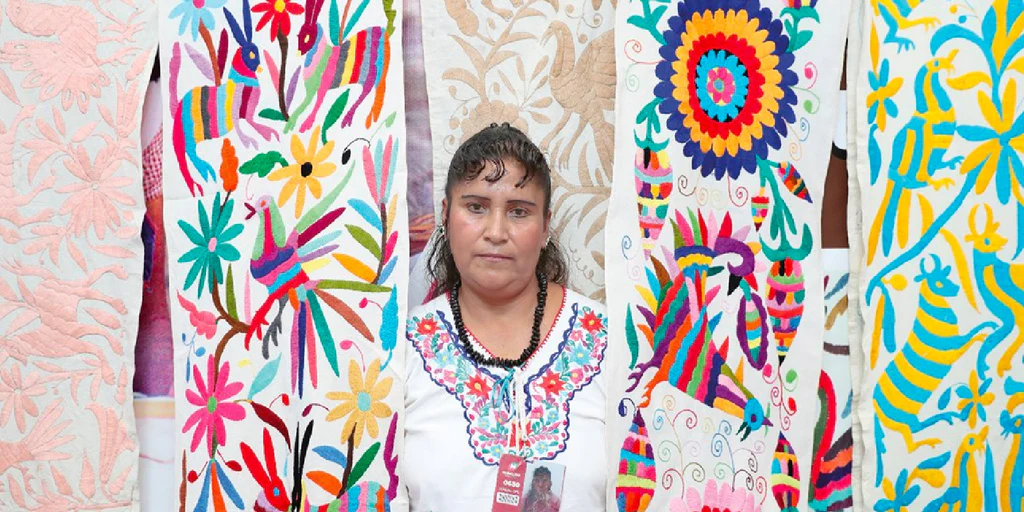Dive into the captivating realm of the Otomi people, where ancient traditions and beliefs intertwine with everyday life. This indigenous community has woven a rich tapestry of culture, from the vibrant colors of their textiles to their deep connection with the natural world. Join us as we explore the enigmatic Otomi heritage, uncovering the secrets of their past while celebrating the vibrant spirit that defines them today. Get ready to be enchanted as we journey through the heart of this fascinating culture, unraveling the wonders that make the Otomi people truly extraordinary.
Captivating Facts About the Otomi
Let’s dive into the fascinating world of the Otomi people, one of Mexico’s most enduring indigenous groups. Their story is full of mystery, resilience, and captivating traditions that have survived for centuries.
- Ancient Roots: Imagine trying to trace your family tree back thousands of years! That’s the kind of history we’re talking about with the Otomi. While their exact origins remain a bit of a puzzle, archaeologists have uncovered evidence suggesting they’ve been in central Mexico for over three thousand years. That’s older than the Roman Empire!
- Textile Tales: The Otomi are known for their incredible skill in creating vibrant textiles. But these aren’t just pretty fabrics; they’re like visual storybooks. Imagine intricate embroidery woven with symbols and patterns passed down through generations, each telling a piece of their history, beliefs, and cultural identity.
- A Symphony of Dialects: Think about how many regional accents and dialects exist in your own language. Now, picture a language family so vast and ancient that it has branched out into a whole array of distinct dialects. That’s the reality of the Otomi language. It speaks to their complex history and the diverse cultural groups that exist within the larger Otomi family.
- Unwavering Resilience: The Otomi have faced their share of challenges throughout history, from colonization to modernization. But through it all, they’ve shown an incredible ability to hold onto their language, traditions, and cultural practices. It’s a testament to their strength and determination to keep their heritage alive.
- Nature’s Healers: For the Otomi, the natural world isn’t just something to admire – it’s deeply intertwined with their spiritual beliefs and traditional medicine. Many believe that plants and herbs hold healing powers, and their knowledge of these remedies has been passed down through countless generations.
- Women of Strength: In Otomi society, women aren’t just keepers of the home; they’re pillars of their communities. They play a vital role in preserving their culture, from weaving intricate textiles to passing down traditional stories and knowledge to their children. They are the backbone of Otomi cultural continuity.
- Navigating the Modern World: Just like everyone, the Otomi are living in a world that’s constantly changing. Globalization and modernization bring new opportunities but also new challenges. Figuring out how to preserve their rich heritage within a rapidly evolving society is an ongoing journey for the Otomi, one that requires balance and adaptation.
As we learn more about the Otomi people, we’re reminded that cultural diversity enriches our world. Their stories, traditions, and resilience offer valuable lessons about history, adaptation, and the enduring power of cultural identity.
What are some interesting facts about the Otomi?
The Otomi people, with a population of over 250,000, are one of the largest indigenous communities in Mexico, renowned for their rich cultural legacy and intricate artwork. Spanning centuries, Otomi textiles have captivated art enthusiasts with their vibrant colors and intricate patterns, each symbol conveying a specific meaning and reflecting the community’s history. The Otomi tribe played a significant role in Mexico’s ancient and pre-colonial history, contributing to the development of cultural traditions and practices. Despite significant external influences, the Otomi people have resiliently preserved their traditional way of life, including unique culinary practices and captivating rituals.
What are the traditions of the Otomi?
The Otomi people are an indigenous group in Mexico known for their stunning handcrafts, ancient traditions, and profound connection to nature. With a rich history spanning several millennia, the Otomi have maintained their cultural practices and beliefs, including elaborate ceremonies, intricate embroidery, and a unique agricultural system. Despite challenges from modernization, the Otomi have exhibited resilience and determination in preserving their heritage and passing it down to future generations. The Otomi culture serves as a testament to the strength and diversity of indigenous traditions in Mexico, inspiring appreciation for nature and the importance of cultural preservation.
Are Otomi Aztec or Mayan?
The Otomi people were not Aztec or Mayan. They predate both groups, with a presence in central Mexico for over three thousand years. While the Aztecs and Mayans are well-known, the Otomi’s story is less widely recognized, though equally fascinating. They were even integrated into the Aztec military, showcasing their strength and strategic importance. Discover facts about tall girls that will surprise you with their astonishing nature.
What is life like for the Otomi people today?
The Otomi are an indigenous people of Mexico, primarily residing in the central plateau region. The Otomi language is part of the Otomanguean language family, consisting of at least four closely related languages. The Otomi have a rich cultural heritage, including vibrant traditional clothing, intricate embroidery, and distinct artistic styles. The arrival of the Spaniards brought significant changes to Otomi life, initially involving alliances and assistance but later leading to displacement and assimilation.
What is the symbol of the Otomi?
While there isn’t one definitive symbol representing the Otomi people, their intricate textiles often feature recurring motifs and designs that offer a glimpse into their beliefs and worldview. Circles, often representing the sun or moon, suggest a strong connection to nature and the cyclical nature of life. Patterns within these circles vary, but each likely holds specific meaning, passed down through generations. These embroidered narratives woven into their textiles serve as a powerful form of cultural preservation, ensuring their stories and artistic traditions endure.
What does the name Otomi mean?
The term “Otomi” originates from the Nahuatl language, the language spoken by the ancient Mexica people. While its exact meaning remains a subject of debate among scholars, some believe it translates to “one who walks with arrows” or “bird arrowman.” These interpretations hint at a possible history steeped in skilled archery or a deep connection to birds, often significant figures in many cultures.
How old is the Otomi language?
Determining the exact age of the Otomi language is a complex task, with linguistic evolution being a gradual process. However, we can make some educated guesses based on what we know about language families. The Otomi languages belong to the Oto-Manguean language family, a vast and ancient group of languages spoken in parts of Mexico and Central America. Linguists estimate that the Oto-Pamean languages, from which the Otomi languages descended, branched off from the larger Oto-Manguean family around 2,500 years ago.
What are some interesting facts about the Alsea tribe?
The Alsea tribe, native to the coastal regions of Oregon, believed they shared a common ancestry and language with neighboring tribes, including the Yaquina, Yachats, Lower Umpqua, and Siuslaw. This shared heritage led to their inclusion in the Confederated Tribes of Siletz Indians in 1856. Living off the land and sea, the Alsea’s culture was deeply intertwined with their coastal environment, shaping their beliefs and practices. Prepare to be amazed by mind blowing facts about calguns that will leave you utterly astounded.
How many people speak Otomi?
Based on recent linguistic surveys, it is estimated that over 670,000 people in Mexico speak an Otomi language, making them the fifth largest indigenous language group in the country. However, it is important to note that this number encompasses speakers of various Otomi languages, which are not always mutually intelligible. Despite their significant numbers, the Otomi languages, like many indigenous languages around the world, face challenges due to the pressures of assimilation and language shift towards Spanish.
Who are the gods of the Otomi?
The Otomi, an Indigenous Mesoamerican group, have traditionally esteemed the moon as their supreme deity, a veneration that persists among contemporary Otomi communities. The Otomi have preserved pre-Hispanic beliefs like Nagualism and engage in shamanic practices, reflecting the enduring influence of their ancestral spiritual traditions. The Otomi pantheon encompasses numerous gods and goddesses, with Ma’ax (the Sun) holding paramount importance, while rituals and ceremonies permeate Otomi culture, embodying their deep spiritual connection. The Otomi face challenges in safeguarding their cultural heritage due to modernization and economic development, necessitating efforts to preserve their unique traditions and identity.
Unveiling the facts about designjoy that will inspire you with their remarkable insights and innovation.
















